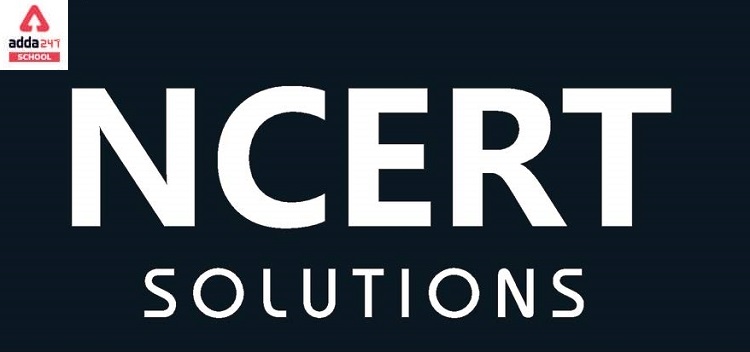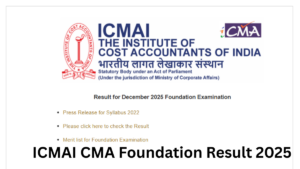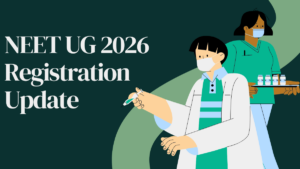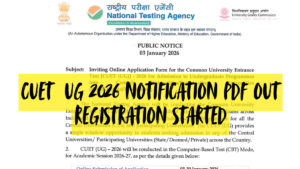Adda 247 provides NCERT Solutions for Class 11 Biology which is for the students who want to go ahead in life and achieve great marks in their examinations. The NCERT Solutions for class 11 are provided by the teachers who are experts of their subjects. The solutions are set according to the rules formulated by the NCERT class 11 biology and in the language that can be understood by every student. By these reading the solutions students can build up a strong base easily. The NCERT class 11 Biology solutions covers the chapters 1 to 22 with the important questions and the answers in a detailed way.
Examinations can be threatening for some people, a proper learning of the concepts is the key to crack the examination. Students rely on the solutions of the NCERT provided by Adda 247. The solutions are formulated by the experts of the subjects who have tremendous knowledge in their subjects.
These NCERT Solutions of class 11 help the students to get familiarized with the textbooks. The students can access the solutions anywhere while browsing the web easily. The solutions are very precise and accurate.
NCERT Solutions for Class 11 Biology Chapter 22 – Chemical Coordination and Integration
The chapter provides information about Chemical coordination and Integration. In the previous chapter, you have already learnt that the nervous system in the body, provides point-to-point coordination among the organs. The neural coordination is rapid, but short lived in nature. However, the nerve cells of not reach to each and every cell of the body. So, a special kind of coordination and integration is provided to each cell for continuous cellular functions. This special function is performed by hormones.
Thus, the nervous system and endocrine system are intimately related to each other forming neuroendocrine system together that jointly coordinate together that regulate the physiological functions of the body.
[sso_enhancement_lead_form_manual title=”Download Full PDF of Class 11 Biology
Chapter 22 ” button =”Download Now” pdf =”/jobs/wp-content/uploads/2021/06/27033545/English-chapter-22.pdf”]
An important question for Ncert solutions class 11 biology chapter 22
Question 1. Define the following:
(a) Exocrine gland
(b) Endocrine gland
(c) Hormone
Answer:
(a) Endocrine glands
These are ductless glands (no tube to carry to various parts).
Their secretions are directly released into the blood which carries them to various parts of the body.
(b) Exocrine glands
The exocrine glands have ducts.
The secretions from these glands are carried through the ducts.
The ducts may open outside the body to release the secretions (e.g. sweat, milk) or may be released on to another surface within the body (e.g. Digestive juices)
(c) Hormones
These are chemical messengers that regulate physiological processes in living organisms.
They act upon specific cells/tissues/organs which are called target cells/tissues/organs.
There are many types of hormones that act on different aspects of bodily functions and processes like growth and development.
Question 3. List the hormones secreted by the following:
(a) Hypothalamus
(b) Pituitary
(c) Thyroid
(d) Parathyroid
(e) Adrenal
(f) Pancreas
(g) Testis
(h) Ovary
(i) Thymus
(j) Atrium
(k) Kidney
(l) G-I Tract
Answer:
- Hypothalamus: Releasing Hormone and Inhibiting Hormone
- Pituitary: Growth Hormone, Prolactin, Thyroid Stimulating Hormone, Adrenocorticotrophic Hormone, Luteinizing Hormone, Follicle Stimulating Hormone, Melatonin
- Thyroid: Tetraiodothyronine, Triiodothyronine
- Parathyroid: Parathyroid Hormone
- Adrenal: Adrenalin or Epinephrine, Noradrinaline or Norepinephrine, Corticoids
- Pancreas: Glcuagon, Insulin
- Testis: Testosterone
- Ovary: Estrogen, Progesterone
- Thymus: Thymosin
- Atrium: Atrial Natriuretic Factor
- Kideny: Erythropoietin
- G I Tract: gastrin, secretin, cholecystokinin (CCK) and gastric inhibitory peptide (GIP).
Question 4. Fill in the blanks:
Hormones Target gland
(a) Hypothalamic hormones __________________
(b) Thyrotrophin (TSH) __________________
(c) Corticotrophin (ACTH) __________________
(d) Gonadotrophins (LH, FSH) __________________
(e) Melanotrophin (MSH) __________________
Answer :
(a) Hypothalamic hormones – Pituitary gland
(b) Thyrotrophin (TSH) – Thyroid gland
(c) Corticotrophin (ACTH) – adrenal cortex
(d) Gonadotrophins (LH, FSH) – Testis and ovaries
(e) Melanotrophin (MSH) – Pigment cells of the dermis of the skin
Question 5. Write short notes on the functions of the following hormones:
(a) Parathyroid hormone (PTH)
(b) Thyroid hormones
(c) Thymosins
(d) Androgens
(e) Estrogens
(f) Insulin and Glucagon
Answer: Functions of the following hormones are as follows :
(a) Parathyroid Hormone (PTH) The parathyroid glands secrete a peptide hormone called parathyroid hormone (PTH). PTH acts on bones and stimulates the process of bone resorption (dissolution/demineralization). PTH also stimulates reabsorption of by the renal tubules and increases absorption from the digested food. It plays a significant role in calcium balance in the body.
(b) Thyroid Hormones Thyroid hormones play an important role in the regulation of the basal metabolic rate. These hormones also support the process of red blood cell formation. Thyroid hormones control the metabolism of carbohydrates, proteins and fats. The Maintenance of water and electrolyte balance is also influenced by thyroid hormones. Thyroid gland also secretes a protein hormone called thyrocalcitonin (TCT), which regulates the blood calcium levels.
(c) Thymosins This thymus gland secretes the peptide hormones called thymosins. Thymosins play a major role in the differentiation of T-lymphocytes, which provide cell-mediated immunity. In addition, thymosins also promote production of antibodies to provide humoral immunity.
(d) Androgens Androgens regulate the development, maturation and functions of the male accessory sex organs like epididymis, vas deferens, seminal vesicles, prostate gland, urethra, etc. These hormones stimulate muscular growth, growth of facial and axillary hair, aggressiveness, low pitch of voice, etc. Androgens play a major stimulatory role in the process of spermatogenesis (formation of spermatozoa), influence the male sexual behaviour (libido).
(e) Oestrogens Oestrogens produce wide ranging actions such as stimulation of growth and
activities of female secondary sex organs, development of growing ovarian follicles, appearance of female secondary sex characters (e.g., high pitch of voice, etc.), mammary gland development. Oestrogens also regulate female sexual behaviour.
(f) Insulin and Glucagon Glucagon acts mainly on the liver cells (hepatocytes) and stimulates glycogenolysis resulting in an increased blood sugar (hyperglycemia). In addition, this hormone stimulates the process of gluconeogenesis, which also contributes to hyperglycemia. Glucagon reduces the cellular glucose uptake and utilization. Insulin is a peptide hormone, which plays a major role in the regulation of glucose homeostasis. Insulin acts mainly on hepatocytes and adipocytes and enhances cellular glucose uptake and utilisation. Insulin also stimulates conversion of glucose to glycogen (glycogenesis) in the target cells. The glucose homeostasis in blood is thus maintained jointly by the two – insulin and glucagons.
Question 6. Give example(s) of:
(a) Hyperglycemic hormone and hypoglycemic hormone
(b) Hypercalcemic hormone
(c) Gonadotrophic hormones
(d) Progestational hormone
(e) Blood pressure lowering hormone
(f) Androgens and estrogens
Answer:
(a) Hyperglycemic hormone and hypoglycemic hormone: Hyperglycemic hormone is glucagon, while hypoglycemic hormone is insulin.
(b) Hypercalcemic hormone: Parathyroid hormone (PTH) is hypercalcemic hormone.
(c) Gonadotrophic hormones: Luteinizing hormone and follicle stimulating hormones are examples of gonadotrophic hormone.
(d) Progestational hormone: Progesterone is a progestational hormone.
(e) Blood pressure lowering hormone: Nor-adrenalin is a blood pressure lowering hormone.
(f) Androgens and estrogens: Testosterone is an example of androgen, while an example of estrogen is estradiol.
Question 7. Which hormonal deficiency is responsible for the following?
(a) Diabetes mellitus
(b) Goitre
(c) Cretinism
Answer:
(a) Diabetes mellitus is characterized by abnormally high glucose levels in the blood due to the deficiency of hormone, called insulin.
(b) Goitre is characterised by an abnormal enlargement of the thyroid gland due to the deficiency of thyroxin hormone in the body.
(c) Cretinism is characterized by stunted growth in the baby due to the deficiency of thyroid hormone in the body.
Question 8. Briefly mention the mechanism of action of FSH.
Answer: Follicle stimulating hormone (FSH) is secreted by the pars distalis region of the anterior pituitary.
It regulates the development, growth, and reproductive processes of the human body. In the ovary, FSH stimulates the growth and maturation of ovarian follicle. As the follicle grows and matures, it releases an inhibitory hormone known as inhibin that ends the process of FSH production.
Action of FSH: Follicle stimulating hormone produces its effect by binding to its specific receptors present on the ovarian cell membrane.
Binding of FSH hormone to its receptor leads to the formation of hormone receptor complex. The formation of this complex leads to biochemical changes in the ovarian follicle, present in the ovary. The ovarian follicles mature and release a mature ovum in the fallopian tube for fertilization.
Question 9. Match the following:
| Column I | Column II |
| (a) T4 | (i) Hypothalamus |
| (b) PTH | (ii) Thyroid |
| (c) GnRH | (iii) Pituitary |
| (d) LH | (iv) Parathyroid |
Answer:
| Column I | Column II |
| (a) T4 | (ii) Thyroid |
| (b) PTH | (iv) Parathyroid |
| (c) GnRH | (i) Hypothalamus |
| (d) LH | (iii) Pituitary |
Features of the NCERT Solutions for Class 11 Biology Chapter 22 – Chemical Coordination and Integration
NCERT Solutions of class 11 have been answered based on the important information on the question.
- The columns are used wherever necessary.
- Solutions are solved point wise and accurately answered point to point.
Frequently Asked Questions on NCERT Solutions for Class 11 Biology Chapter 22
What are the advantages of referring NCERT Solutions for class 11 Biology chapter 22?
Students referring the NCERT Solutions of class 11 by Adda 247 find the solutions helpful during the exams. The solutions are prepared by the experts in an interactive manner keeping in mind the students. The students’ perspective is kept in mind while preparing the solutions. It helps in completing the syllabus on time and also provides notes for the revision prior to the exam.
What are the advantages of referring NCERT in competitive exams like JEE and AIPMT?
Most of the competitive exams like NEET, JEE etc. follow the basic NCERT books for designing their question papers. NCERT serves as the base for every book prepared for NEET and JEE. The competitive exams are based on the CBSE syllabus applied in XI and XII classes and NCERT books strictly follow CBSE syllabus. In addition to this, NCERT books play an important role in clearing out the theoretical concepts. Every topic given in NCERT books is explained in such a way to help students make their basics and fundamentals strong and clear.
How to read NCERT books more efficiently?
Given below are the important points which must be followed while reading the NCERT books in an efficient manner:
Go through each topic thoroughly by understanding the meaning and significance of each line mentioned in that particular topic.
Ask your teacher if any doubts.
Note down the important topics to revise at the time of examination.
Solve all the exercise questions given at the end of each chapter. These questions are important for understanding the concepts in a better way.
Is it mandatory to solve all the NCERT questions mentioned at the end of each chapter?
The questions and answers mentioned in NCERT textbooks at the end of each chapter are quite important not only for examination but also for understanding the concepts in a better way. These questions aim to test the students’ understanding and learning over the topics that they have learned in the chapter.
Solving the NCERT exercise problems will help to
- clear all the concepts and formulae you learned in a chapter
- get comfortable with different types of questions that might be asked in exams
- get enough practice which is key to succeed in Mathematics exam
- improve your accuracy and speed
What are the important concepts covered in the Chapter 22 of NCERT Solutions for Class 11 Biology?
The concepts involved in the chapter 22 of NCERT Solutions are –
22.1 – Endocrine Glands and Hormones
22.2 – Human Endocrine System
22.3 – Hormones of Heart, Kidney and Gastrointestinal Tract
22.4 – Mechanism of Hormone Action
These concepts are created by the faculty at Adda 247. The solutions are available at Adda 247 in the PDF format which can be downloaded by the students.









 ICMAI CMA Foundation Result 2025 Out, Do...
ICMAI CMA Foundation Result 2025 Out, Do...
 NEET UG 2026 Registration: NTA releases ...
NEET UG 2026 Registration: NTA releases ...
 CUET UG 2026 Online Registration Started...
CUET UG 2026 Online Registration Started...














